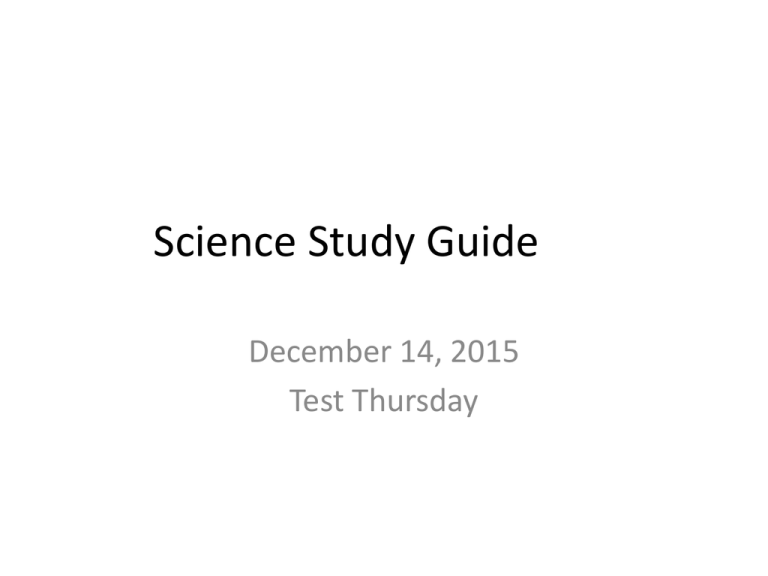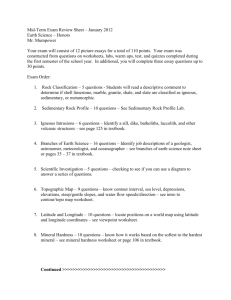Science Study Guide
advertisement

Science Study Guide December 14, 2015 Test Thursday Week 1 Structure of the Earth • Earth is made up of the Core, Mantle and Crust. Draw and label • The thickest layer of the Earth is the mantle. • Plate Tectonics: A theory that some scientists believe the Earth’s continents used to fit together like a puzzle. • Seismographs measure the intensity of earthquakes. • Geologists study the earth. Seismologist study earthquakes. • Geologists study the Earth’s rocks, minerals, and metals. Science Study Guide week 2 • The Rock Cycle: Igneous rock-sedimentary rockmetamorphic rock. • Igneous rock comes from molten layer of the earth like the mantle. • Sedimentary rock is broken down igneous rock (like sand) that is pressed into layers. Examples: flint, sandstone, and conglomerate • Metamorphic rock: Pressure and heat can change sedimentary rock into metamorphic rock this takes millions of years. • Geologists learn the age of Earth’s materials by studying the layers. Week 3 Soil • About 10% of Earth is covered with useful soil. • It takes over thousands of years for rock to turn into soil. This process begins with water freezing and breaking rocks apart. Plant roots also break apart rocks. Wind also breaks down rocks into smaller particles like sand. Next lifeless plants and animal remains mix with the particles. Lastly Animal waste mixes with it and helps supply the soil with nutrients and minerals. Week 3 Soil • Earth worms enrich the soil by eating decaying leaves/roots. Their waste leaves behind nutrients for growing plants. • Topsoil • Subsoil • Layers of rock • Bedrock Week 3 Soil • Crop Rotation is when farmers change their crops from year to year so nutrients aren’t removed from the soil. Corn-peas-beans Week 4 The Mighty Ocean • The Hydrosphere is all the water on the Earth including: Oceans, Lakes, Rivers and Drinking Water.






